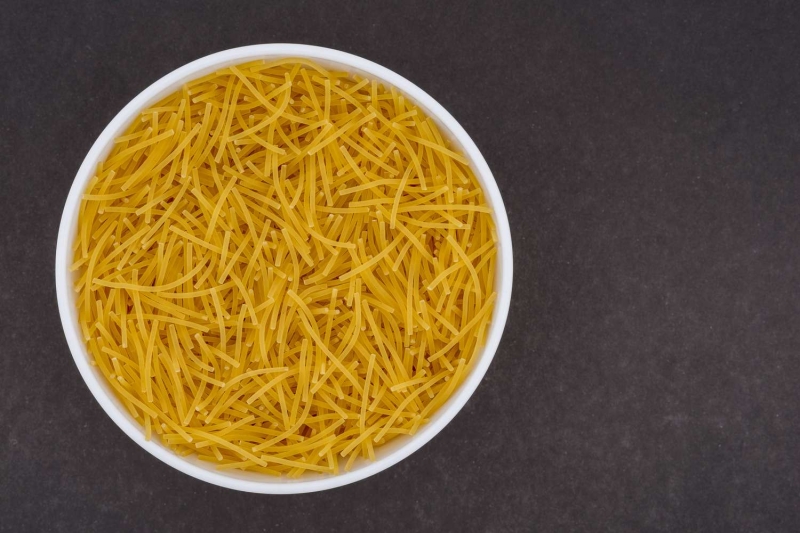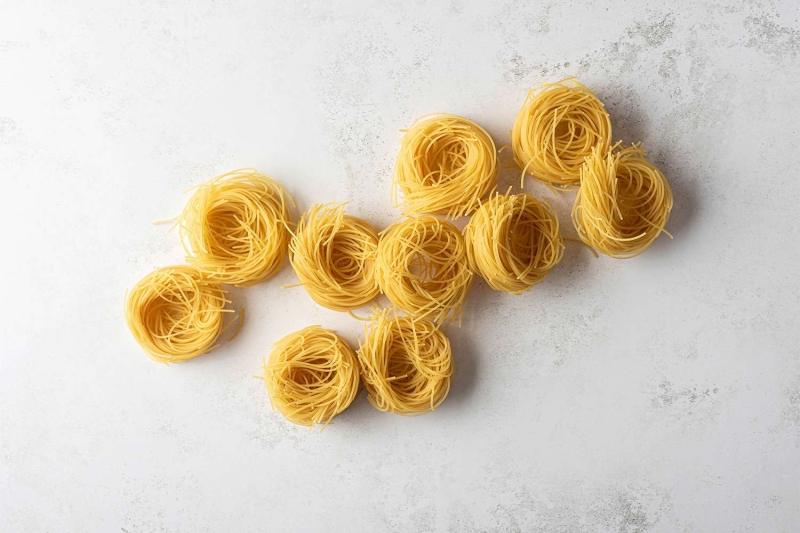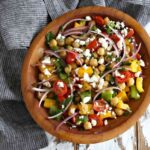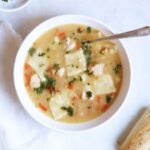A Guide to Buying and Cooking Vermicelli
Vermicelli (pronounced "verm-uh-CHELL-ee") is a long, strand pasta originating in southern Italy and used in a variety of cuisines around the world. In Italy, it's a bit thicker than spaghetti, but in the U.S. it's thinner.
Fast Facts
- Category: Strand pasta (extruded)
- Cook Time: 1 to 3 minutes (fresh), 5 to 7 minutes (dry)
- Main Ingredients: Durum semolina, eggs
- Meaning: Little worms
- Substitutes: Spaghetti, spaghettini, fedelini
What Is Vermicelli?
Vermicelli is a long, strand pasta made from durum wheat semolina and eggs. Its name is derived from the Italian word vermi, meaning "worms," so the word vermicelli translates to "little worms." It's most commonly available in its dried form, although it is possible to find packages of fresh durum vermicelli. Although the fresh kind is always made with egg, the dried kind occasionally omits it.
Vermicelli is an extruded pasta, which means that the dough is forced through a specially shaped die, a thick metal plate with holes in it, causing the noodles to emerge from the die in whatever shape the die produces.
In Italy, vermicelli is thicker than spaghetti, whereas, in the U.S. and other English-speaking countries, the reverse is true. Italian spaghetti is generally around 2-millimeters thick, whereas vermicelli is slightly more than that, up to 2.3 millimeters. In the U.S., spaghetti is between 0.06 inches and 0.11 inches in diameter, whereas vermicelli is less than 0.06 inches (1.5 millimeters) across.
So, if you’re in the U.S., vermicelli is basically a thinner version of spaghetti, meaning that it is best served with a simple tomato sauce or an oil-based sauce like garlic and olive oil. In general, the thinner your pasta, the lighter the sauce should be.
Vermicelli vs. Angel Hair
Because vermicelli is regarded as a somewhat thin pasta (in the U.S., at least), it is sometimes compared with angel hair pasta, also known as capellini. Both are long, extruded pasta made from durum wheat. But angel hair is quite a bit thinner than vermicelli and cooks extremely quickly. Vermicelli is overall more similar to spaghetti or spaghettini than it is to capellini.
How to Cook Vermicelli
Cooking vermicelli is a simple matter of simmering it in salted water until it reaches the al dente stage, and because it’s so thin, this might only take as little as five minutes. One common misconception among home cooks is that adding oil to the cooking water will help to prevent the pasta from sticking together. But there’s no truth to this. The key to ensuring that pasta doesn’t stick is to cook it in a large pot so that it has plenty of room to move around as the water boils. The motion of the water helps to prevent sticking. And an abundance of water also dilutes the starches in the water, so that they don’t glue the strands of pasta together.
Tossing the cooked pasta directly in a pan of sauce and letting it cook for a minute or so also helps prevent sticking, as well as enhancing flavor, since the pasta will absorb sauce like a sponge. And unless you’re serving it in an oil-based sauce, such as aglio e olio, or garlic and olive oil, don’t toss the cooked pasta in olive oil before saucing it, as this will only cause the sauce to slide off the pasta rather than being absorbed by it.


Varieties
Although the word vermicelli is Italian, and this basic strand of pasta has been eaten in Italy since the middle ages, there are various similar noodles that are enjoyed around the world. Spain, the Middle East, Africa, South Asia, and the Americas all have their own version of thin, extruded pasta made from wheat flour and sometimes egg.
In Latin America, a wheat noodle, called fideo, is very similar, although it's typically cut or broken up into much shorter segments, and often prepared in soups and broths. In India, the noodle is known as semiya, and it's often prepared by dry roasting the noodles, then simmering it along with other aromatic ingredients until it's the consistency of oatmeal.
The word vermicelli is also used to describe a wide range of noodles throughout east and southeast Asia, like in the classic Thai pad woon sen, where they are made from rice flour, as well as other starches, including mung bean, potato starch, and tapioca. They’re used in soups, as a filling for rolls, and in salads.
Substitutes
Spaghetti, spaghettini (also known as thin spaghetti), and fedelini are all good substitutes for vermicelli, though fedelini is less widely available.
Vermicelli Recipes
Because vermicelli is used in a number of cuisines besides Italian, here are a few examples.
- Vermicelli With Saffron Chicken
- Indian Vermicelli Upma
- Japanese Ketchup Spaghetti


